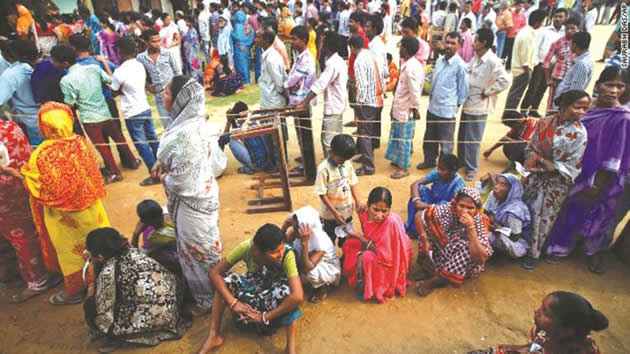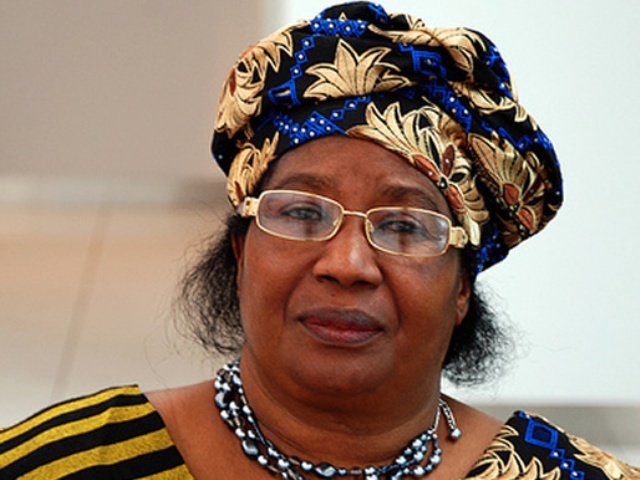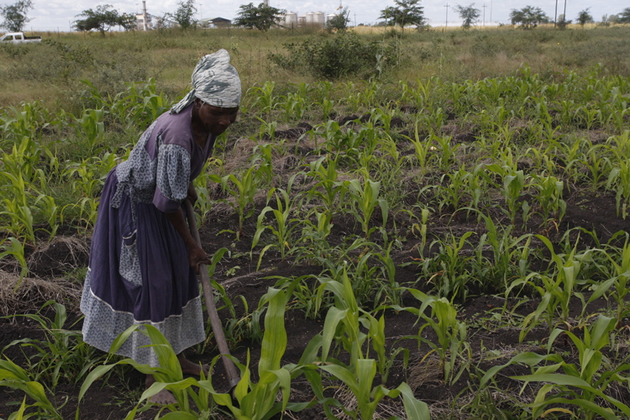India’s jaw-dropping election no picnic

 Hildegarde The Arena
Hildegarde The Arena
ABRAHAM Lincoln describes the electoral process thus: “Elections belong to the people. It’s their decision. If they decide to turn their back on the fire and burn their behinds, then they will have to sit on their blisters.”
India, the world’s largest democracy, is currently holding its six-week parliamentary elections, which commenced on April 7 and will end on May 12.
On May 16, the results will be announced, and a new leadership will emerge. Will it be Rahul Gandhi continuing the Gandhi dynasty, or Narendra Modi of the BJP party?
Collating information from a variety of sources (Washington Post, New York Times, the Guardian, CNBC, IBT Media, Times of India and the Election Commission of India, I sought to find out how a country with the second-largest population (1,2 billion) is conducting such a large-scale election.
India’s last election was in 2009.
What does it take to hold an election in such a country, and still maintain peace after the results are announced? What lessons should Zimbabwe draw from India since the two former British colonies have excellent bilateral and multilateral relations?
In “five reasons you should be following India’s jaw-droppingly enormous elections”, Adam Taylor and Anup Kaphle give an interesting summary of what this election is like:
It’s been argued that 2014 will be the biggest year in the history of democracy, with more people than ever before going to the polls to decide their own fate.
 Nowhere is that tag more obvious than in India, which is seeing a truly enormous number of people voting in six weeks of polling from April 7 to May 12.
Nowhere is that tag more obvious than in India, which is seeing a truly enormous number of people voting in six weeks of polling from April 7 to May 12.
The election is taking place in an increasingly important tech-savvy country, with vital issues of economic problems and nationalism at stake, and a choice between a world famous name and a controversial outsider. It’s a fascinating moment in democracy, and one that shouldn’t be ignored.
Even for those who know nothing about India, this really looks to be one of the most fascinating political events this year, and not just because of its scale.
After the votes are counted on May 16, we’ll know who Indians have elected to their parliament.
In total, 815 million people are eligible to vote. The election has been staggered on nine days over more than a month.
India has 300 million more voters than the world’s next three largest democracies combined (US – 193 million; Indonesia – 186 million; and, Brazil – 136 million).
It is projected that when India goes to the polls in 2019, there will be nearly one billion eligible voters, which is close to the African continent’s total population.
The constituencies are huge with an average constituency size having a population of about 1,3 million people.
Whatever party has a majority, or is able to form a majority coalition, will form a government from which a prime minister will lead the country.
So mammoth is India’s election that for example, on one polling day, the BBC reported that more than 110 million voters were eligible to cast votes.
That’s almost double the number of people in the United Kingdom, and 30 million less than the entire population of Russia. (Compare and contrast with Zimbabwe’s figures in the 2013 harmonised elections. Also compare with South Africa’s figures on the May 7 election).
Palash Ghosh writing in IBT Media argues that the 2014 election is projected to cost US$5 billion, “making it the costliest election ever in India and the second most expensive campaign in world history, behind only the 2012 US presidential election”.
According to a New York Times report, in the state of Uttar Pradesh alone, the election is expected to cost US$61,5 million.
Eight hundred and fifteen million people cannot vote on the same day, not even two or three. The voting period has been spread from April 7 to May 12.
There are more than 930 000 polling stations around the country, 1,4 million electronic voting machines and 11 million polling officers.
The Election Commission of India pledged that no voter should travel more than 2km to reach a polling station.
According to the Guardian, the “inked finger” has become a “symbol of democracy and will get you some pretty handy discounts.
The Confederation of Indian Industry launched the ‘Show the ink, see prices sink’ campaign, which rewards voters with discounts at petrol stations, restaurants and even hospitals”.
It is also an election of firsts with more than 100 million people voting for the first time.
One of the most interesting shifts in the election is the sudden role of technology.
An SMS alert system called COMET will be used, for example, and Facebook is believed to have been a key factor in getting young, urban voters more engaged that in previous votes.
In another new twist, the election will be the first to allow non-resident Indians to vote (though they will still have to travel to India to vote), and voters will be allowed to answer “none of the above”.
Apart from logistics and figures, this is an election about issues, especially the state of the economy.
Even with electoral processes, there should be a “Look East” policy for all emerging democracies. If India can go through every election without the usual problems that haunt Africa’s elections, why shouldn’t Africa borrow a leaf or two from the world’s largest democracy?









Comments